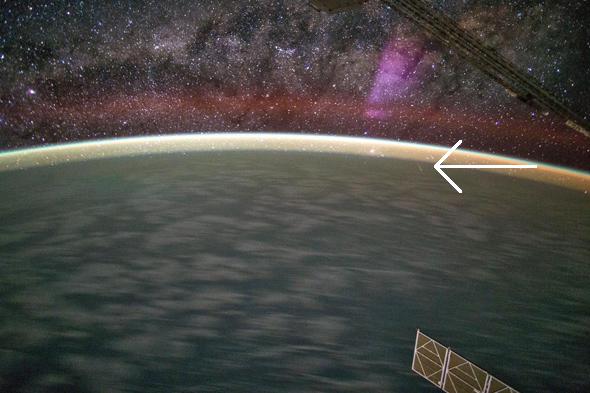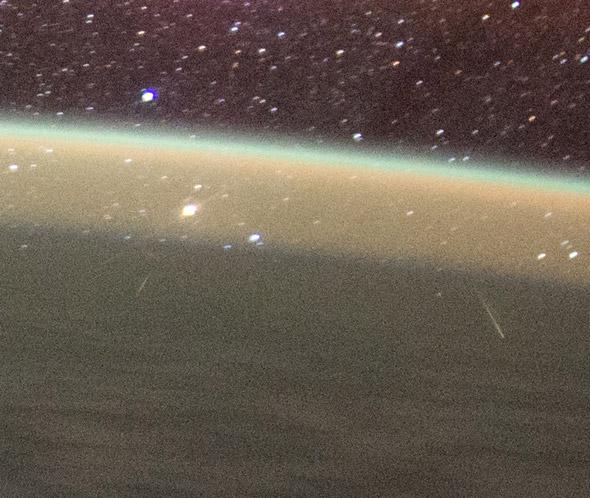Last week was the peak of the Perseids meteor shower, one of the best and most reliable sky shows of the year. I received approximately eleventy billion tweets about it, and it seems that most folks saw several dozen meteors per hour.
I have old friends visiting, and we camped out on the driveway for an hour and saw a couple of dozen ourselves. Many were very bright, leaving visible glowing trains (what astronomers call the long streak in the sky left after the meteoroid itself burns up; it’s made of ionized stuff blown off of the rock as it rams through our air).
One of my favorite astrophotographers, Rogelio Bernal Andreo, took the above photo of the shower on Wednesday from Hawaii. It’s actually a composite of many photos he took over the course of 150 minutes; he chose the shots that had meteors in them, aligned them using the stars as references, added them together, and then used the landscape from a single photo to replace the bottom part of the picture (which would otherwise be blurred when the pictures are shifted to match the stars).
Several things jump out at me. You can see how almost all the meteors point to a single spot in the sky; that’s the radiant, the spot from which the meteors appear to radiate away. It’s a perspective effect. Any meteor in the image that does not have such a trail must be a random, sporadic one. You can usually see five or so sporadic meteors per hour on any given night.
Also, the meteor in the bottom middle, just to the left of the summit Mauna Kea, has a reddish horizontal streak next to it: That’s a persistent train, a train that can last for several minutes, whipped by upper level winds.
Also, all the way in the upper right? That fuzzy thing is the Andromeda galaxy. Directly below it is the constellation of Perseus, from which the shower gets its name.
Andreo has started a gallery of his work called Starscape Gallery, and it’s worth your time to visit.
In a related note, here’s another photo that took me by surprise: It shows what looks to be a pair of meteors burning up in Earth’s atmosphere, taken from the International Space Station!

Photo by NASA
That photo was taken on Aug. 9, when the ISS was over the Indian Ocean. It’s hard to see the meteors; they’re in the middle right, just under the Earth’s limb. Here’s a close-up:

Photo by NASA
Given the timing, I thought they might be Perseids. But being suspicious, I opened Sky Safari and used it to identify the Milky Way features in the photo. I quickly figured out that the bright star on the left in the wide-angle shot is Alpha Centauri, and the one in the bottom middle is Antares.
The meteors appear to be coming from a spot not far from Antares, which is in Scorpius, a long way from Perseus in the sky. I think it’s a complete coincidence, and given their direction of travel I have to conclude they’re random meteors, not Perseids.
… assuming they’re meteors at all. They’re faint, and the exposure time of the photo was only four seconds. That would be quite a coincidence to capture any meteor at all in that short an exposure (and the one on the left points suspiciously close to Antares, making me wonder if it’s a reflection of some kind). It may be impossible to know.
But it’s still a cool picture. And a few years ago astronaut Ron Garan did photograph a Perseid from space!
The next really good meteor shower is the Leonids in November, and then the Geminids in December. I may try to photograph one or both, even though my last attempt didn’t go so well.
I may never do as well as Malin or Andreo, but it’s fun to try.
Tip o’ the Whipple Shield to Peter Caltner for the ISS photo.
